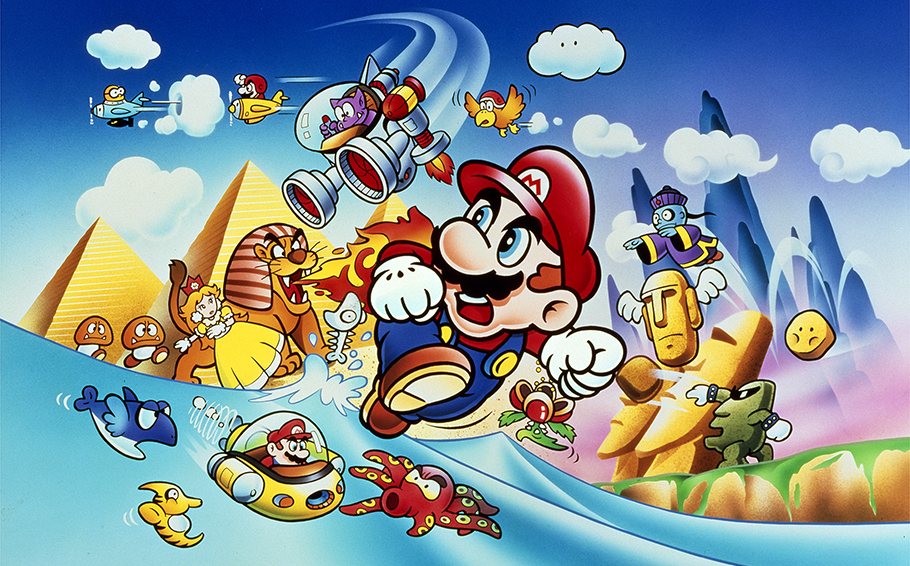 |
| An adventure so epic Mario has to duplicate himself twice on the box! |
“Welcome, and enter the center
Of my Super Mario adventure
A girl is trapped on the other side of town
So I'm moving in leaps and bounds
Folks around my way think I'm strange
But there's a villain to blame
Even my ma, she thinks I'm crazy
But I've got to rescue Daisy”
- Ambassadors of Funk, “Supermarioland”
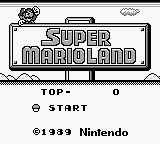 |
| Pretend there's a green filter over every screenshot for the full Game Boy effect (source for all images is mariowiki.com, as usual) |
The Facts
Release Date: April 21, 1989 (Japan), July 31, 1989 (USA)
Original Platform: Game Boy
Director: Satoru Okada
Producer: Gunpei Yokoi
Also Playable On: Virtual Console (3DS)
What's the Deal
In the peaceful world of Sarasaland, there are four kingdoms: Birabuto, Muda, Easton, and Chai. One day, a large dark cloud appeared above Sarasaland, and from it emerged the space conqueror, Tatanga. Tatanga took over Sarasaland by hypnotizing the populace, and has captured its ruler, Princess Daisy, to make her his queen. Mario somehow got wind of these events and has made his way to Sarasaland to defeat Tatanga, rescue Princess Daisy, and save Sarasaland.
Background/Development
Instead of being developed by Nintendo EAD, the game was developed by Nintendo R&D1. Shigeru Miyamoto wasn't involved in the development of the game in any known capacity, with the director being Satoru Okada, and the producer being the late Gunpei Yokoi.
Gunpei Yokoi was the inventor of the Game & Watch, producer of titles such as Metroid and Kid Icarus, invented Nintendo's famous cross-shaped Control Pad, and most famously, was the original designer of the Game Boy.
This was originally designed to be the pack-in title with the Game Boy, but Nintendo of America was convinced by Bullet-Proof Software to bundle the system with Tetris instead.
 |
| I'd rather have a Sky Pop than yet another Funko Pop |
My History With It
I didn't know the game existed until I saw it in a store when I was about seven or eight years old. I didn't have a Game Boy yet, but I knew I wanted it so I could play the game where Mario rides around in a plane and a submarine.
When I did finally get a Game Boy, I didn't get this game...but I got its immediate sequel. Which I was fine with, since it was portable Super Mario!
Turns out the sequel was better anyway.
I did get the game soon enough and enjoyed it.
I thought the game went missing when I was a teenager, but found it inside an old couch my family was throwing out.
When my best friend gave me a Super Game Boy in 2008, this was the first game I used to test it out. Finished it in one sitting.
About four years later, this was one of the games my friends and I played together on Skype.
Few years ago, I considered streaming my playthrough of this game on Twitch, but while listening to the full version of Iron Butterfly's “In-A-Gadda-Da-Vida” and see what finishes first. That song is seventeen minutes, but this game is twelve levels. There'd be no piracy involved, since I own Super Mario Land on a Game Boy cartridge, as well as In-A-Gadda-Da-Vida on vinyl, but I never went through with it.
 |
| The Super Game Boy is the best SNES or Game Boy accessory EVER. |
Playthrough
Played On: SNES, via Super Game Boy
First up is the Birabuto Kingdom!
I've heard people claim that Princess Daisy rules over a world that's entirely desert. This is only ¼ true. Birabuto is a desert kingdom, but the other three kingdoms of Sarasaland are not.
Of all the great music in this game, the theme for the underground bonus room is the one that stuck with me most as a kid. It's a short little ditty, but very catchy.
The Superball Flower is a cool power-up, with how it bounces like a pinball around the screen, and can collect coins. But the angle at which Mario throws it, and the fact you can have only one on-screen at a time makes it inferior to the Fire Flower, in my eyes.
Birabuto is based on ancient Egypt, as evidenced by the pyramids, hieroglyphics, and sphinxes. The name should have translated as “Pyrapt Kingdom”, but the Ps in“Piraputo” (from “Piramiddo” and “Ejiputo”, the Japanese words for “pyramid” and “Egypt”) were interpreted as Bs instead.
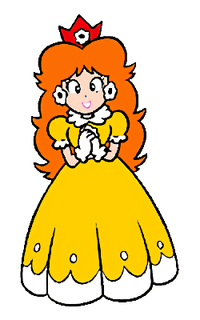
Hi, it's Daisy! In both my recent playthroughs, I never got the 3UP in the bonus game. And only got a Superball Flower once.
Also, it's possible (and easy) to enter the bonus game entrance from above, but I found it more fun to enter while still being visible on screen.
Is it possible to get onto the ceiling in 1-3? Looks like there's stuff up there, but I can't think of any way to explore that part of the screen. Maybe it's just decoration.
The boss battle against King Totomesu seems to be a direct homage to the battles against the Fake Bowsers in the first two Super Mario Bros.
Concept art for King Totomesu was made for Super Mario Odyssey, to appear in the Sand Kingdom. Presumably he was a placeholder for the Sphynx.
Next is the Muda Kingdom!
This one is inspired by the Bermuda Triangle, and thus, is set on the water.
The first two levels of this World imply that Mario traveled there via spaceship?
Neat.
The Piranha Plants are often off-center when they emerge from their pipes. It's odd, but I like it. Reminds me that this game was made by actual people, y'know? Like being able to see the brushstrokes in a painting.
World 2-3 is one of the things that sold me on this game as a kid. It's not platforming, it's an underwater shoot-em-up level, where Mario is in a submarine known as the “Marine Pop”! What a neat change of pace! This is gonna be awesome!
...it's actually just okay.
There's a segment where coins spell out “MARIO”. That's cute. As is the music for this level being a heavily-rearranged (to the point of being nearly unrecognizable) version of the Super Mario Bros. Ground Theme.
I wonder if the developers had heard of the desire to have Mario riding in a cloud for scrolling shooter segments in the original Super Mario Bros., and decided to implement it here?
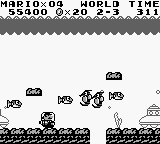
"Marine Pop" sounds like a frozen treat on a stick.
I'm not sure if it sounds like it'd taste good.
World 3 is the Easton Kingdom!
This one draws a lot from Easter Island, which is evident from all the moai hanging around as enemies, as well as in the background.
Allow me to plug my webcomic here again. “Eenie, meeny, miney, moai...” I even have a character mention Super Mario Land as an example of moai!

Moai money, moai problems
I realized that one of the things that's stopped me from speedrunning this game while listening to Iron Butterfly is the fact that the difficulty jumps up in the Easton Kingdom, especially in World 3-2. Part of it is me trying to rush through the level, and making careless mistakes, but also wonky collision detection and imprecise controls don't help.
World 3-3 is neat in how it smoothly transitions into a cave in the second half, just by adding a ceiling.
The Chai Kingdom is where this comes to a close!
It is based on ancient China, with the music, the enemies, and even the pattern in the sky.
The “Oriental riff” opens the music for the Chai Kingdom, which seems kinda stereotypical to me, but the rest of the track is great.
I think Chai is my favorite Kingdom in the game. The backgrounds being a bamboo forest and a mountain range are super-cool, the music is fantastic as mentioned, and the enemies stand out as being really unique.
The Pionpi enemies are based on jiāngshī, a Chinese mythological creature often compared to a vampire. Due to the limited graphic capabilities of the Game Boy, I thought it was a ninja when I first encountered it. They're cool, but annoying, since stomping one only works temporarily, because they get back up after a few seconds. Mario has to either lure them into a bottomless pit or tag 'em with two Superballs.
I really like the snake-like Nyololin enemies, too, because their facial expression makes them look like they're awaiting an explanation for whatever they just witnessed. Always amuses me.

"Mind explaining that, sir?"
The game hasn't gotten any easier since the Easton Kingdom. I actually ran out of continues on World 4-2, and had to start the game over.
World 4-3 is the final level, and has Homeboy in another scrolling shoot-em-up level, this time he's in a plane called the “Sky Pop”!
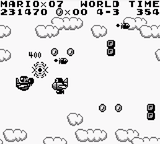
Who you callin' chicken?
The bird enemies that Mario shoots down are called...you ready? Chickens.
No clever name, no pun, just...Chickens.
The Fists that emerge from the pipes right before the boss battle against Biokinton are weird, but at the same time, they feel more traditionally Super Mario than most of the other new enemies in this game.
Speaking of, Biokinton is an unusual boss. For starters, he's not a bigger version of a regular enemy like King Totomesu (who is a Gao), Dragonzamasu (who is a Yurarin), or Hiyoihoi (who is a Tokotoko). Secondly, unlike the other three bosses, there's not a switch behind him that defeats him instantly, and the player HAS to shoot him down with the Sky Pop's missiles. And thirdly, we never see what Biokinton actually looks like, since all official sources claim the cloud is just a disguise because Biokinton is shy and has never shown his face.
After taking down Biokinton, our final boss, Tatanga, the Mysterious Spaceman, appears, in his spaceship, Pagosu.
Man, that's a lotta commas.
Tatanga's an adorable little alien in the artwork for the game, but the comic book adaptation makes him look a lot more threatening.

Just a little evil extraterrestrial guy
He's not terribly difficult to defeat, though. Just keep an eye on his splitting projectiles and don't stop firing, and you'll shoot him down in no time.
While Daisy impostors had appeared before, the real one appears after taking down Tatanga, and it's interesting to compare her appearance in-game to how she appears in the manual artwork. In the game, she's wearing a sleeveless gown, her hair is straight, and she has no crown.
Anyway, the ending has Princess Daisy thank Mario, and they go fly off together in a jet. The End.
Power-Ups
Returning:
Super Mushroom
Star
New:
Superball Flower
1UP Heart
Milestones
First handheld Super Mario game.
Unless you count the Super Mario Bros. Game & Watch, but...why would you do that?
Debut appearance of Princess Daisy
Who has yet to make another appearance in the main Super Mario series, but frequently appears in spinoff titles
Only appearance of Sarasaland
Debut appearance of Tatanga
But, unlike Daisy, we'll see him again
Debut of the Superball Flower and 1UP Heart
First vehicle sections
First game where every boss is unique
Trivia
There wasn't much of an effort to translate the instruction manual for this game, leading to things like Tatanga's prisoner being named “Daisy Princess” (since in Japanese, she's known as Daisy-hime), and all enemies going by their Japanese names.
When the game hit the 3DS Virtual Console in 2011, the enemies that have counterparts in previous Super Mario games finally got English names: the Goomba-like Chibibo became “Goombo”, the explosive turtle Nokobon is now “Bombshell Koopa”, and Gira, the Bullet Bill variation, became “Bullet Biff”.
Interestingly, the Piranha Plant enemies, despite looking different from the ones in other games, are still called “Pakkun Flower” in Japanese and in the English manual, making them actual Piranha Plants.
In 1992, Ambassadors of Funk, a musical project managed by British musician Simon Harris, released a single titled “Supermarioland” that sampled sound effects and the Birabuto Kingdom theme. The lyrics were by British rapper Colin “Einstein” Case (under the name “MC Mario”).
Harris didn't have much interest in video game music until a friend of his let him play Super Mario Land on his Game Boy. Harris cleared the samples with Nintendo UK, who happily promoted the track and shot a music video for it (which was considered lost for a long time, but has since resurfaced) at Chessington World of Adventures in London.
Simon Harris wanted to do an entire album of Super Mario remixes such as this, and got the go-ahead from Nintendo UK, but Nintendo of America was unresponsive...so he went straight to Shigeru Miyamoto himself, who approved the project, and in 1993, Super Mario Compact Disco was released in Japan.
Conclusion
A complaint I've heard that this feels less like a Super Mario game, and more like a Super Mario knockoff. Honestly, I can see it.
The physics and controls aren't as tight as they are in the console games, so the precision platforming is less precise, and often requires more trial and error, which feels cheap at times. The blocks are also oddly small, for some reason, and they're harder to hit.
That said, if it's a Super Mario knockoff, it's a quality one. The flaws are made up for somewhat by the game's personality. Sarasaland is a fascinating place, and a very unique one among Mario's adventures, with each Kingdom having its own flavor inspired by a real world location.
The final boss being an alien abductor is really cool, and really stands out among nearly every other Super Mario game having Bowser as the main antagonist.
The shooting segments are also a neat standout, and not something we'd ever get much of again.
It's a really weird little game, and very short, with some wonky controls, and cheap, frustrating difficulty...but it's very unique and has a lot of charm. Recommended with some reservations.
“Well, I'm back off my Lisa Stansfield trip
And I'm rejuvenated and I'm remixedI took planes, trains, and automobiles
And for real, got ill in Brazil
I'm the Wizard of Oz while on tour
And got poor in Singapore
And I'm eatin' sushi in Japan, but
There ain't no place like Super Mario Land ”
- Ambassadors of Funk, “Supermarioland”
Next time: It's gonna be a big one. You WILL believe a raccoon can fly as we boot up what is, in my opinion, the best NES game of all time: Super Mario Bros. 3!

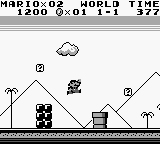
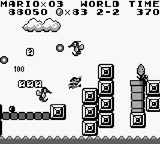
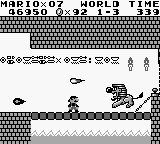
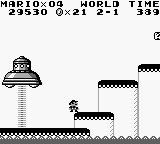
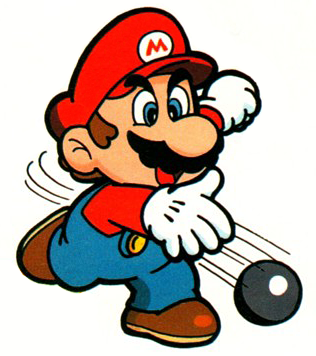
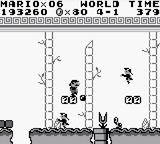

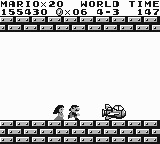
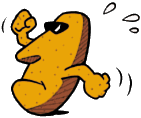
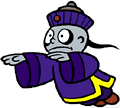

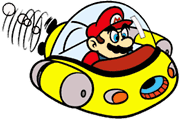


No comments:
Post a Comment